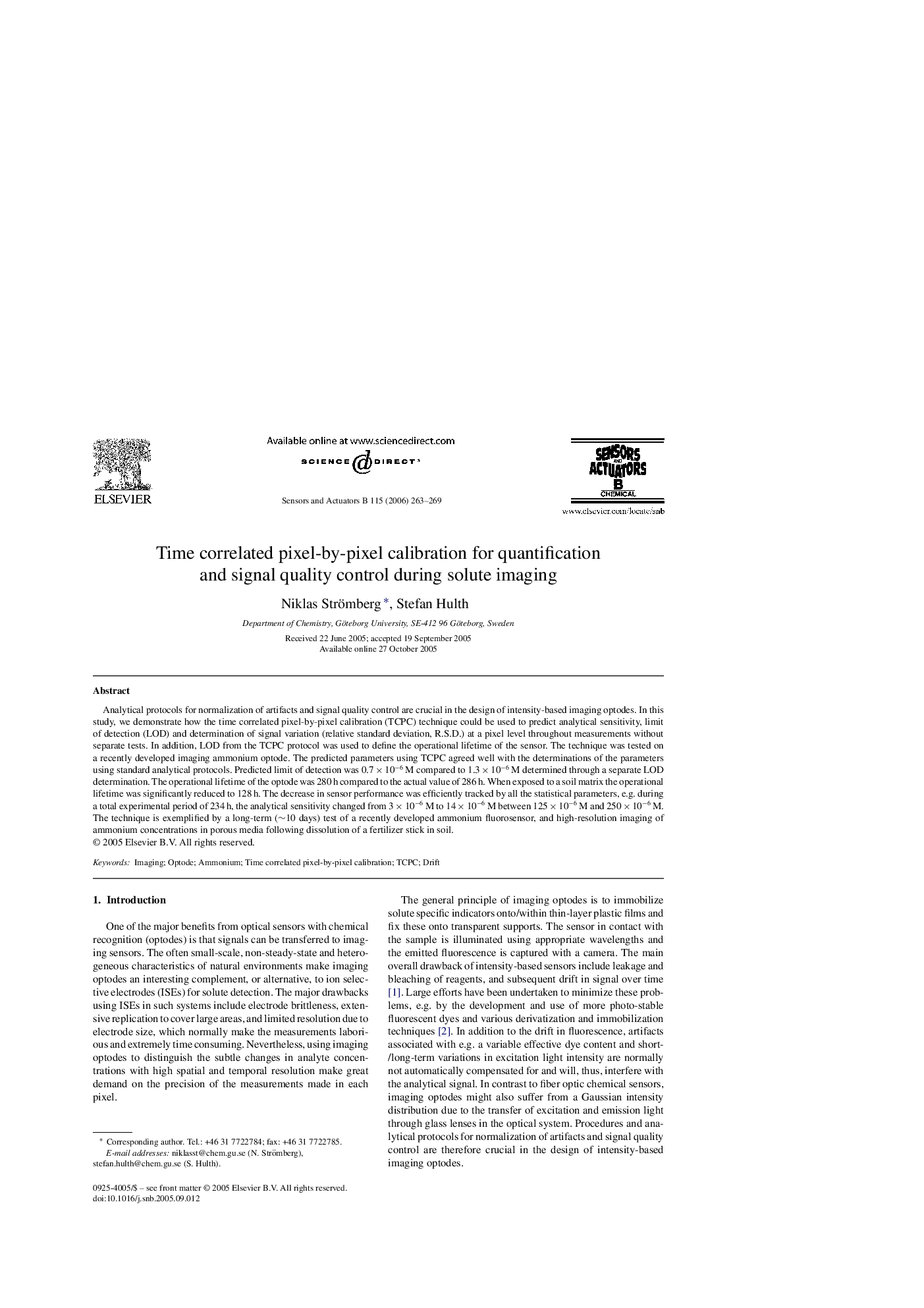| Article ID | Journal | Published Year | Pages | File Type |
|---|---|---|---|---|
| 747283 | Sensors and Actuators B: Chemical | 2006 | 7 Pages |
Analytical protocols for normalization of artifacts and signal quality control are crucial in the design of intensity-based imaging optodes. In this study, we demonstrate how the time correlated pixel-by-pixel calibration (TCPC) technique could be used to predict analytical sensitivity, limit of detection (LOD) and determination of signal variation (relative standard deviation, R.S.D.) at a pixel level throughout measurements without separate tests. In addition, LOD from the TCPC protocol was used to define the operational lifetime of the sensor. The technique was tested on a recently developed imaging ammonium optode. The predicted parameters using TCPC agreed well with the determinations of the parameters using standard analytical protocols. Predicted limit of detection was 0.7 × 10−6 M compared to 1.3 × 10−6 M determined through a separate LOD determination. The operational lifetime of the optode was 280 h compared to the actual value of 286 h. When exposed to a soil matrix the operational lifetime was significantly reduced to 128 h. The decrease in sensor performance was efficiently tracked by all the statistical parameters, e.g. during a total experimental period of 234 h, the analytical sensitivity changed from 3 × 10−6 M to 14 × 10−6 M between 125 × 10−6 M and 250 × 10−6 M. The technique is exemplified by a long-term (∼10 days) test of a recently developed ammonium fluorosensor, and high-resolution imaging of ammonium concentrations in porous media following dissolution of a fertilizer stick in soil.
